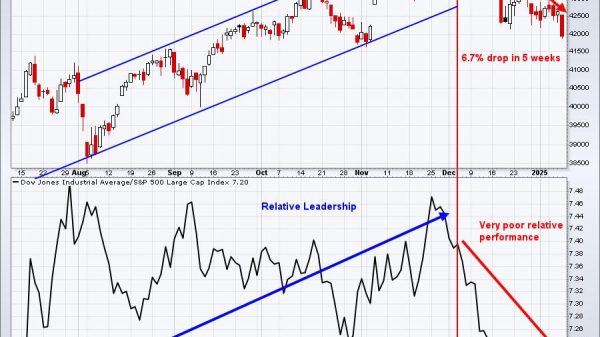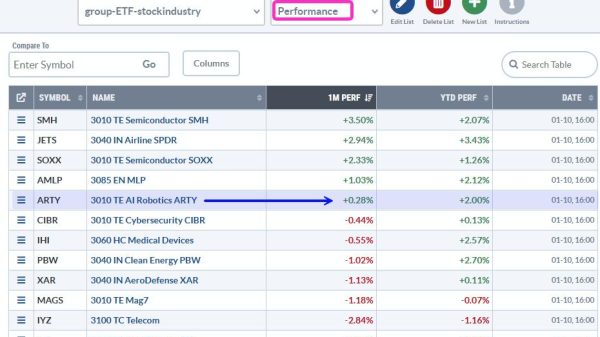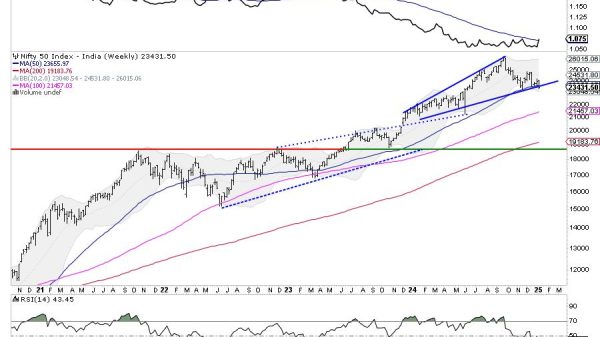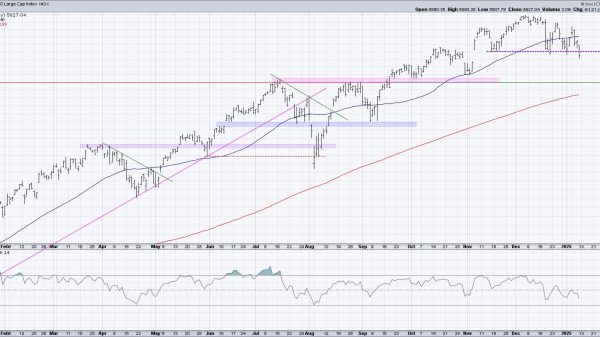The Utilities sector is known as a defensive investment simply because it generally withstands all phases of the business cycle. Utility stocks are often considered complementary assets to assets aimed at “growth.”
Yet even within defensive sectors like Utilities, growth is also a matter of timing. From a seasonal perspective, there are some months when Utilities tend to outperform the S&P 500. Considering the rising demand for electrification and EV adoption, and that many utility companies are adopting artificial intelligence (AI) technologies, the rising tide in Utilities might come in stronger and higher this time than in years previous.
Whether it does or not, it’s worth anticipating such a trend, especially if you are looking at Utilities for a short-term seasonal play or to further diversify your portfolio long-term. Let’s look at the Utilities Select Sector SPDR Fund (XLU) as a sector proxy by focusing on the following:
XLU’s 10-year seasonal performanceXLU’s 10-year seasons’ performance against the S&P 500 ($SPX)XLU’s weekly and daily performance
If you want to allocate some of your funds to XLU, you must find a good entry point.
How to Access the Seasonality Tool
There are different ways to access the seasonality tool in StockCharts.
Click the Charts & Tools tab at the top of the StockCharts page, enter a symbol in the Seasonality panel, and click “Go.” Enter the symbol in the ChartBar at the top of the page and select “Seasonality” from the dropdown menu on the left.From Your Dashboard, in Member Tools, click on Seasonality.Below the seasonality chart, you’ll find links to instructions and quick tips that give more detailed instructions.
XLU’s 10-Year Seasonal Performance
CHART 1. XLU’S 10-YEAR SEASONAL PERFORMANCE. Look at its higher closing rate relative to its average monthly returns and compare it to the chart below, which tracks its relative seasonal strength against the broader market.Chart source: StockCharts.com. For educational purposes.
XLU’s strongest seasonal months are in March (67% higher-close rate and 3.2% average return), July (78% higher close rate and 3.3% average return), and October (89% higher-close rate and 2.2% average return).
February is seasonally its worst month, with a 33% higher-close rate—a 67% lower-close rate—and an average return of -2.5%. This seasonal context is important to know because we’re heading into February in a matter of weeks. But a seasonality reading would seem incomplete if you didn’t also look at XLU’s performance against the broader market.
XLU’s 10-Year Seasonal Performance Against the S&P 500
CHART 2. XLU’S 10-YEAR SEASONAL PERFORMANCE AGAINST THE S&P 500. Compared to the S&P 500, seasonality charts can change quite drastically.Chart source: StockCharts.com. For educational purposes.
In contrast to the seasonality chart in Chart 1, July is a poor month for XLU compared to the S&P 500. XLU’s comparative performance in October is rather tepid. However, March’s performance against the S&P 500 is seasonally the strongest, while February remains similarly weak.
So, if you’re aiming for a seasonal play, might February be a favorable entry point in anticipation of March’s potential outperformance? Let’s look at XLU’s weekly performance.
XLU’s Longer-Term Cyclicality
CHART 3. WEEKLY CHART OF XLU. It may be channeling downward, but are the smaller cycles relatively consistent?Chart source: StockCharts.com. For educational purposes.
Since the March 2020 crash, where XLU (along with the market as a whole) bottomed out, you can see how it channeled upward, peaking in the summer of 2022, before then channeling downward.
Many analysts would argue that Utilities tend to see longer growth swings a year prior to (and months after) a recession. It’s a safe-haven play. As for 2024 prospects, analyst predictions for Utilities and XLU remain mixed. However, note XLU’s strong cyclicality, referencing its swings to the Stochastic Oscillator’s high-to-low cycles. XLU is currently in a down cycle. And this matches both of XLU’s seasonality profiles mentioned above. So, if you were to jump into February weakness to ride XLU’s potentially strong March upswing, what’s a good buy point?
A couple of things: If seasonality expectations prove consistent with previous years, then it’s reasonable to expect further weakness in February and a potential rally in March.
Overlaying an Ichimoku Cloud in the daily chart is helpful for reference and context (see chart below). Its lowest point coincides with the first level of potential support near $59.00 (November lows indicated by dashed line labeled 1). Price is likely to reach this level in a few weeks, and you’ll want to see whether price begins consolidating at the level or whether it bounces. This level also serves as a potential buy point if you’re looking for a seasonal trade.
CHART 4. DAILY CHART OF XLU. Note the three possible entry points coinciding with XLU’s February seasonal weakness.Chart source: StockCharts.com. For educational purposes.
Worse to worst-case scenarios will see price breaking below the first level and potentially bouncing off the second and third levels indicated on the chart. The third level ($54.50) marks a two-year low; you’ll likely see plenty of reaction if the price closes toward that level.
So if you’re looking to take advantage of February weakness and March strength expectations, you’ll want to set a price alert at $60 and observe what happens when price reaches $59. If no consolidation or reversals occur, and if price continues to fall well into February, set alerts for the next two levels indicated on the chart. It’s kind of a see-and-respond scenario. And timing, especially considering it’s a seasonality play, is everything in this situation. But at least you have the reference points to help make a better decision.
How To Set a Price Alert
Setting a technical alert at these support and resistance levels would be helpful as you weigh your potential entry points against any market developments that may influence your decision.
To access the Technical Alert Workbench, follow these steps:
From Your Dashboard, click the Alerts button > New in Your Alerts panel.In the Alerts workbench, choose which type of alert you want to create from the Alert Type buttons at the top left.To create a price alert, select Price Alert as the alert type.Add a symbol in the symbol box, set your price trigger, and choose how you wish to be notified.Click the Save Alert button.
The Bottom Line
Remember that this particular seasonality reading frames the larger economic context surrounding Utilities. Many changes and new developments are happening, and analyst predictions are mixed. So, set a technical price alert at the support and resistance levels as you weigh your potential entry points.
Disclaimer: This blog is for educational purposes only and should not be construed as financial advice. The ideas and strategies should never be used without first assessing your own personal and financial situation, or without consulting a financial professional.























